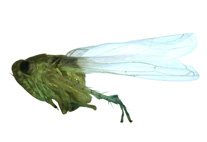Abstract
The chorionic structure of sixteen pentatomid species is described. Morphological patterns in different taxonomic levels are discussed. In addition, egg characters useful in cladistic analyses are listed, and some of those characters are tested for congruence with two cladistic analyses previously conducted within Pentatomidae. Descriptive studies were conducted with Banasa induta, Capivaccius bufo, Catulona pensa, Chinavia armigera, Chinavia aseada, Chinavia brasicola, Chinavia runaspis, Dichelops furcatus, Euschistus heros, Euschistus riograndensis, Euschistus paranticus, Mormidea cornicollis, Podisus distinctus, Podisus nigrispinus, Serdia apicicornis, and Thoreyella maracaja. The eggs were examined and photographed under light and scanning electron microscopy. Based on literature data, a list of 40 egg characters with potential phylogenetic importance has been compiled. Some of these characters were included in the cladistic analyses of the genus Nezara (six characters) and of the Chinavia obstinata group (five characters). Both analyses were performed in TNT with equal weighting of characters. The eggs of most of the Neotropical species studied were barrel-shaped, chorion translucent and spinose, with aero-micropylar processes that were short and clubbed. The patterns of egg morphology could be identified in Carpocorini, Procleticini, and in the genera Banasa, Chinavia, Euschistus, Mormidea, and Podisus. In the cladistic analyses, the inclusion of egg characters did not affect the topology of the trees shown in the original papers. For the analyses, the egg characters were somewhat informative. At present, a total of 286 Pentatomidae species have their egg stage described.

